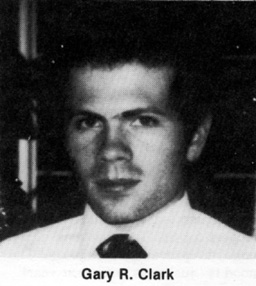
 Our earth is nearly five billion years old, and life emerged on this planet approximately four billion years ago. The transition from geogenesis to biogenesis was a major advance. With the recent origin of the human species, the evolution process has become aware of itself. Yet, is there life or intelligence on other earthlike planets throughout the universe?
Our earth is nearly five billion years old, and life emerged on this planet approximately four billion years ago. The transition from geogenesis to biogenesis was a major advance. With the recent origin of the human species, the evolution process has become aware of itself. Yet, is there life or intelligence on other earthlike planets throughout the universe?
No doubt prehistoric men gazed at the night skies, curious about those distant shining objects strewn across the ominous heavens. In their lack of scientific understanding and fear of the unknown, they resorted to magicoreligious thought and activities as well as legends and myths to explain a world seemingly inhabited by both good and evil spirits.
In antiquity, some natural philosophers not only advocated the empirical/rational investigation of nature but also speculated on living things elsewhere in the cosmos, e.g., Xenophanes, Epicurus, and Lucretius. The following church-dominated dark ages and medieval period suppressed scientific inquiry. Turning from nature to the supernatural, Augustine wrote that he could no longer dream about the stars. Later, however, Nicholas of Cusa did envision inhabitants in every region of the universe.
During the subsequent renaissance, Giordano Bruno (1548-1600) boldly initiated the modern cosmology: an orientation revitalized by Carl Sagan in this century.
Bruno went far beyond the Aristarchus/Copernicus heliocentric theory by claiming the universe to be eternal in time, infinite in space, and endlessly changing. His own sweeping world-view is grounded in the metaphysical principles of plurality, uniformity, and cosmic unity. He rejected the peripatetic terrestrial/celestial dichotomy in favor of an infinite number of inhabited worlds more or less analogous to our earth: life and intelligence necessarily exist throughout the infinite universe.
Bruno overcame all geocentric, zoo-centric and anthropocentric models of reality. Likewise, the theme of extraterrestrial life or intelligence was later also supported by: Kepler, Wilkins, Huygens, Fontenelle, Kant, Haeckel, Lowell, and Hoyle.
In the last century, the rigorous search for fossils led to discovering those unusual lifeforms of the remote past. The Lamarck/Darwin evolution framework held the human animal to be a recent product of organic history. Yet, how accidental or inevitable is biological evolution? Although lifeforms did emerge at least once in this noisy and violent universe, exobiologists speculate that they will be found elsewhere (perhaps based on different chemistries other than carbon, e.g., silicon or ammonia). Thus, man's intellectual penetration into the infinity of cosmic space was followed by an equally important intellectual penetration into the depths of evolutionary time.
Logic does not dictate that man or the earth must be unique. The birth of stars may inevitably entail the formation of planets engaged in prebiotic chemistry producing organic molecules like nucleotides and/or amino acids (hydrogen, liquid water, and energy are abundant throughout the cosmos). If the basic laws of biology and physics are applicable throughout the universe, then the emergence of life from matter seems inevitable given the environmental prerequisites.
To date, the life sciences have restricted their concerns to the earth. However, humankind is no longer confined either intellectually or physically to the finite sphericity of this globe. The new challenge is to overcome the myopic planetary view of things by adopting a properly contextual cosmic perspective of reality. Although there is at present no irrefutable empirical evidence for astrobiology or sentient life beyond our planet, this alone should not deter the cosmic quest: it is too soon to abandon exobiology. No dogmatic closure should be placed on human wonder or free inquiry in an open society.
Fortunately, there are those who are still eager to seriously pursue a rigorous search for organisms and civilizations elsewhere among innumerable galaxies. Unmanned interplanetary and interstellar vehicle probes as well as radio telescopes penetrate the abysses of outer space in order to detect empirical evidence of extraterrestrial life or intelligence. Further advances in space technology incorporating extraplanetary telescopes and minicomputers will greatly enhance the human search for protoplasmic existence and intelligence on other celestial bodies throughout the universe.
Apparently the moons and other planets of our own solar system do not support indigenous living things. However, astrobiology maintains that this physical universe may be a zoocosmos teaming with life. Beyond our Milky Way are billions of other galaxies, each with billions of stars if not also countless sun/planet systems. A myriad of other worlds may be swarming with awesome biological forms, disquieting alien beings, and perhaps even organic phenomena beyond man's present cognition. Thus, although as a form of highly organized matter life may be a relatively rare occurence in each galaxy, it is statistically speaking still bound to be very abundant in the cosmos as a whole in view of the staggering number of the galaxies.
Special stony carbonaceous chondrite meteorites contain water, minerals, and complex organic molecules as hydrocarbons or amino acids (the precursors of life on earth). Comets, asteriods, and cosmic gas/dust clouds do harbor these molecules of prebiotic chemistry which anticipate organic phenomena. Physical uniformity or the seemingly pervasive and inexorable laws of nature, statistical probability, empirical inferences, and a temporal framework of billions of years all support both the logical possiblity and empirical probability of life-yielding star/planet systems throughout the universe.
Even if the event is centuries from now, the anticipated conclusive empirical evidence for extraplanetary life or human contact with extraterrestrial intelligence will be the most profound discovery in the history of scientific inquiry and a singularly awesome turning-point in the life of our species. This event will stimulate a retrospective reevaluation of the nature of existence and at the same time revolutionize our conception of the meaning and destiny of humankind. In fact, the distant descendants of our species may enjoy their finest hours among other galaxies.
Man is no longer the ultimate measure of all things. A new and challenging paradigm is emerging: the universe is our ultimate frontier. In the search for life/intelligence beyond our earth, planetary biophysics is emerging as an intriguing but legitimate area of scientific inquiry.
As citizens of the universe, we strongly urge and support the ongoing search for extraterrestrial life/intelligence as well as the possibilities of the human exploration and colonization of space. It is the cosmic quest itself which ennobles and dignifies the human species and the saga is just beginning!

 H. James Birx is Professor of Anthropology and Chairman of the Department of Sociology and Anthropology at Canisius College, Buffalo, New York. He holds a B.S. in natural sciences, M.S. in biology, M.A. in anthropology and Ph.D. in philosophy from the State University of New York at Buffalo. His research areas include botany, human osteology and the evolution theory. Extensive travels have taken him to Stonehenge, Machu-Picchu, and Teothuacan as well as the Galapagos Islands and twice to Charles Darwin's Down House in Kent, England. Dr. Birx is the author of the books "Man's Place in the Universe" and "Pierre Teilhard de Chardin's Philosophy of Evolution" as well as numerous articles and reviews. Dr. Birx is a Contributing Editor of COSMIC SEARCH.
H. James Birx is Professor of Anthropology and Chairman of the Department of Sociology and Anthropology at Canisius College, Buffalo, New York. He holds a B.S. in natural sciences, M.S. in biology, M.A. in anthropology and Ph.D. in philosophy from the State University of New York at Buffalo. His research areas include botany, human osteology and the evolution theory. Extensive travels have taken him to Stonehenge, Machu-Picchu, and Teothuacan as well as the Galapagos Islands and twice to Charles Darwin's Down House in Kent, England. Dr. Birx is the author of the books "Man's Place in the Universe" and "Pierre Teilhard de Chardin's Philosophy of Evolution" as well as numerous articles and reviews. Dr. Birx is a Contributing Editor of COSMIC SEARCH.
 Gary R. Clark is a pilot, writer, and an avid space-science enthusiast. He received his Bachelor's degree in both Political Science and Communication from Canisius College, Buffalo, New York, in 1980. His interests now range from aviation science and technology to space exploration and cosmic phenomena (especially black holes). He is currently writing a feature on Leonardo da Vinci, a treatment of the history of flight from the myth of Icarus to the space shuttle Columbia and beyond. His favorite Sci-Fi film remains "2001: A Space Odyssey" (Kubrick/Clarke, 1968).
Gary R. Clark is a pilot, writer, and an avid space-science enthusiast. He received his Bachelor's degree in both Political Science and Communication from Canisius College, Buffalo, New York, in 1980. His interests now range from aviation science and technology to space exploration and cosmic phenomena (especially black holes). He is currently writing a feature on Leonardo da Vinci, a treatment of the history of flight from the myth of Icarus to the space shuttle Columbia and beyond. His favorite Sci-Fi film remains "2001: A Space Odyssey" (Kubrick/Clarke, 1968).
![[NAAPO Logo]](../../Images/NAAPOsm.jpg)
![[NAAPO Logo]](../../Images/NAAPOsm.jpg)